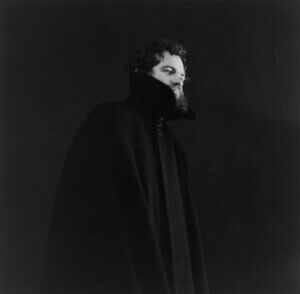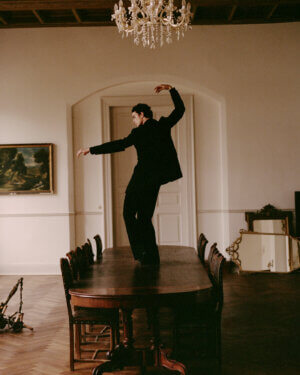MJ Harper has never been just one thing. Born in Jamaica, he moved to Florida as a child, living with his single mother with whom he experienced the struggles and complexities of the immigrant experience in America. Eventually he discovered his passion and talent for the performing arts. He danced for Alvin Ailey II in New York and Company Wayne McGregor in London before breaking away to navigate his own unique, hybrid path. Developed over the past eight years, Harper’s first full-length live performance, “Arias For A New World,” officially debuted last year at the legendary Berliner Ensemble, weaving together dance, spoken word, fashion, music and performance art into an enigmatic exploration of Tanztheater in the age of the algorithm. For the launch of the Reethaus this fall, he is expanding this concept into a two-night event blending music, dance, discourse and sound design to awaken the subterranean space and its state-of-the-art spatial sound system. We spoke to Harper in advance of the opening about his winding path from Kingston to “Arias.”
INTERVIEW
Reethaus Conversations
The Expansive Performance Art of MJ Harper
In the lead-up to the opening of the Reethaus in Berlin, we spoke to MJ Harper, the Jamaica-born, Florida-raised multimedia artist, dancer and creative director whose protean artistic vision is helping to shape the launch of our subterranean performance space this September at Flussbad.

In the lead-up to the opening of the Reethaus in Berlin, we spoke to MJ Harper, the Jamaica-born, Florida-raised multimedia artist, dancer and creative director whose protean artistic vision is helping to shape the launch of our subterranean performance space this September at Flussbad.

CW Can you tell me a bit about creating “Arias for a New World”?
MJH I've been working on it now for eight years, yet I never wrote any of the text down until very recently. The text would just come to me. I'd be brushing my teeth or something, and it was like something was just visiting me and I would start talking as this person. Then when Grace (Wales Bonner) was curating “A Time For New Dreams” at the Serpentine, she invited me to make a work in response to the exhibition, and each day I was creating it in real time. I started realizing that there was something working itself out. Each time I've done a performance, I've snapshotted moments that I felt were very important. Then I did a residency at Callie’s in Berlin and during that residency, I basically put the seven years together. I dusted some bits and cut some bits, added some bits. And out of that process came the Berliner Ensemble piece.
CW How would you explain who that character is?
MJH It’s a mishmash. The base of it is: I asked myself, if Eartha Kit and Pina Bausch were my age, and they both had iPhones and Eartha Kit joined Pina Bausch’s dance company, what would the work look like?
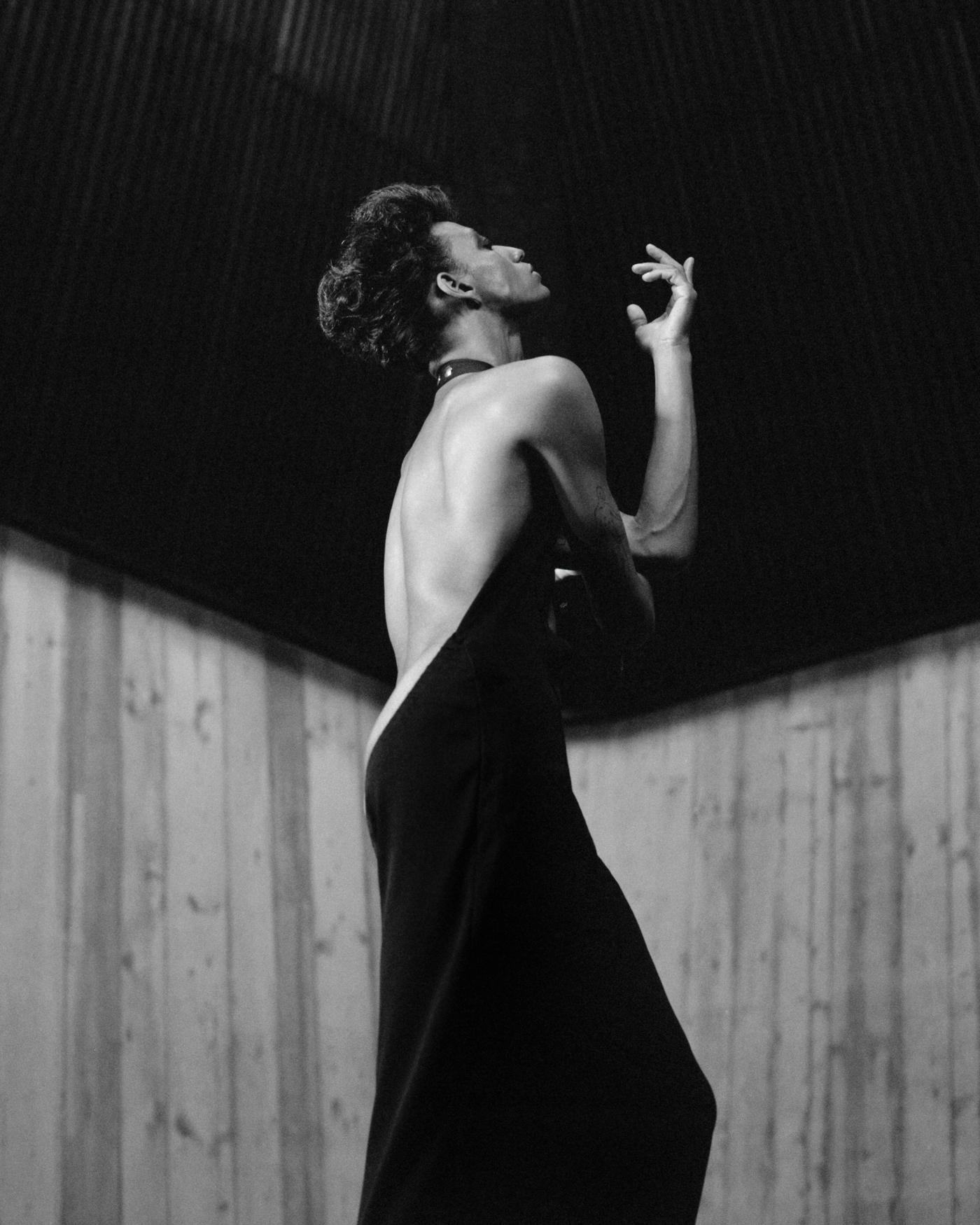
CW How much is this piece rooted in your childhood, specifically your relationship with your mother?
MJH I started to realize only recently that the tone of voice that I speak in is very much related to some of what I started realizing were survival tactics of my mom to get through the American system. I remember, if she ever got pulled over by the cops, her voice would change. I have a very clear memory of once, she was on the phone with one of her girlfriends and her Jamaican accent's still very present. And a business call came through and my mom was like, (Patois) “Hol on, hol on, lemme call ya back.” And then all of a sudden, I heard a woman that sounded very much like the following: “Hello, Janet Hohn, Graphics Plus.” From that specific point onward, I started realizing what you could call the code-switching. This character takes all of these little bits of memory and puts it together. And then another layer of it is my own experience of being essentially a showgirl, a show-boy, everything I went through that I didn't really get to share with my mom about what I experienced going through top tier institutions of the performing arts and in general, learning that not all systems are systems of care.
CW You moved with your mother from Jamaica to Florida as a child?
MJH My mother moved ahead of me to Florida and then she sent for me when I was six or seven. There's a big chunk of my childhood where we weren't with each other. I have clear memories up until her move, and then from when she left until I got to America, it's blank. I guess the separation was quite traumatic. And then even when she finally did send for me, we didn't live together for some time. She was always working a few different jobs. When I was coming home from school, she had probably already left to do a night shift. She would make food and I would heat it up. And then when I was going to school in the morning, she would be just coming home.
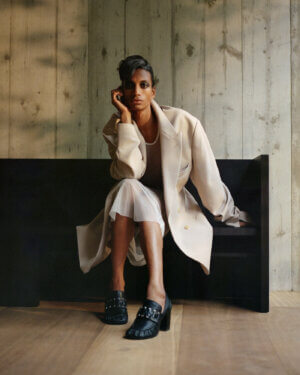
“I started thinking about how I could work with movement in a way that’s not obvious that allows me to mature into this stage of my life. And then I thought, oh, I can use text. I wanted to use the text as choreography for me to play in this virtuosic way but still preserve my body.”
CW Was she supportive of you pursuing dance?
MJH This is where I feel her love. Because she worked so hard, I never had to worry about not being able to go in the direction that was best for me. The college that I went to, she was the one that forced me to go to that scholarship audition. She always pushed me to make sure that I was within these spaces. Everything that she couldn't do, she would somehow set up outside of us.
CW With your work, you're bridging worlds—fashion, theater, dance, spoken word. This is something that’s becoming more prominent culturally, but you’re doing it in such a concrete and deep way. How did you end up moving into the worlds of fashion and art?
MJH Well dancing in London I experienced a bad injury. And when I got to Berlin eight years ago, I was in a very heavy place and I actually didn't want to dance anymore. Just before I came here, I had dipped my toe into the fashion world. I started working with Grace Wales Bonner and (artist) Matthew Stone, who shot FKA Twigs’ first cover, and also (stylist and creative director) Alister Mackie, who allowed me to assist on two shoots. And that was quite important because I realized maybe I don't want to be a stylist, but I'm fascinated with this world.
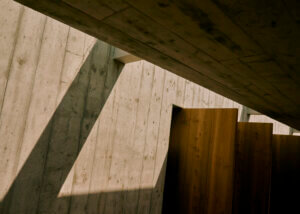
CW And this is when the body of work that became "Arias For a New World" started to take shape?
MJH Meeting (fashion designer) Stefano Pilati after moving to Berlin, new conversations began to open up. Both he and Grace have been incredibly supportive and inspiring. Parallel to working in fashion, I started to dance for the Komische Oper, and the experience really restored my faith in theater. I realized that you can be a leader in a heart-based way and you can still get the work done and not feel less of a person. And then also for my body, I realized you need to do things on your own terms. I started thinking about how I could work with movement in a way that's not obvious that allows me to mature into this stage of my life. And then I thought, oh, I can use text. I wanted to use the text as choreography for me to play in this virtuosic way but still preserve my body. That was the big seed.
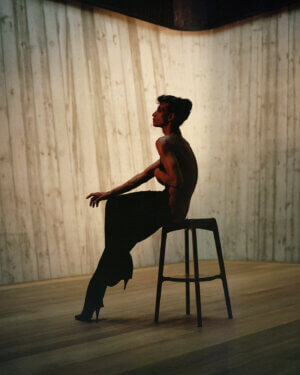
“I’m not interested in dance explicitly. I’m interested in movement, and I think there’s movement in everything.”
CW The two-night opening you've curated for the Reethaus features "Arias for a New World," as well as a site-specific live performance by the cellist, singer-songwriter and polymuse Kelsey Lu. But it also functions as a symposium, with a panel discussion between you, Kelsey Lu and writer Kandis Williams. How did you develop this element?
MJH The concept is inspired by Theaster Gates’s approach to nurturing community through arts, education and social practice. I really respect how he weaves the social process into his fine art and how his core values of art land in humanity. I also appreciate his ability to speak about important matters that often get pushed to the wayside.
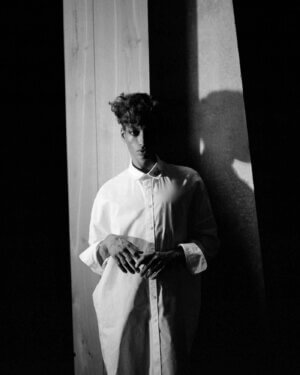
CW Where do you see “Arias” going?
MJH I have this strange idea that I would love to be a guest director of an opera house someday. And the work that I would make would be an expanded version of this world. I'm not interested in dance explicitly. I'm interested in movement, and I think there's movement in everything. An aria technically is the lone solo within an operatic work. And I found that quite interesting because it's also the moment in an opera where that one voice gets to come out. And what's enchanting about the opera is that one moment actually. What happens when you put several of those singular moments together?
CW So all of these individual performances are placed into more of a collective, with the implication that we are completely intertwined?
MJH Yes, and then in the classical performance world, it's very much like you're either in the corps, a soloist or a principal. And this is an attempt to merge and make real that space in between.
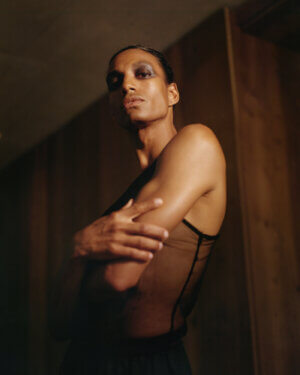
Contact
Berlin
Zur Alten Flussbadeanstalt 1
10317 Berlin, Germany
10317 Berlin, Germany
LISBON
Largo de Santa Marinha 1
1100-383 Lisbon, Portugal
1100-383 Lisbon, Portugal
Website by Studio Airport
